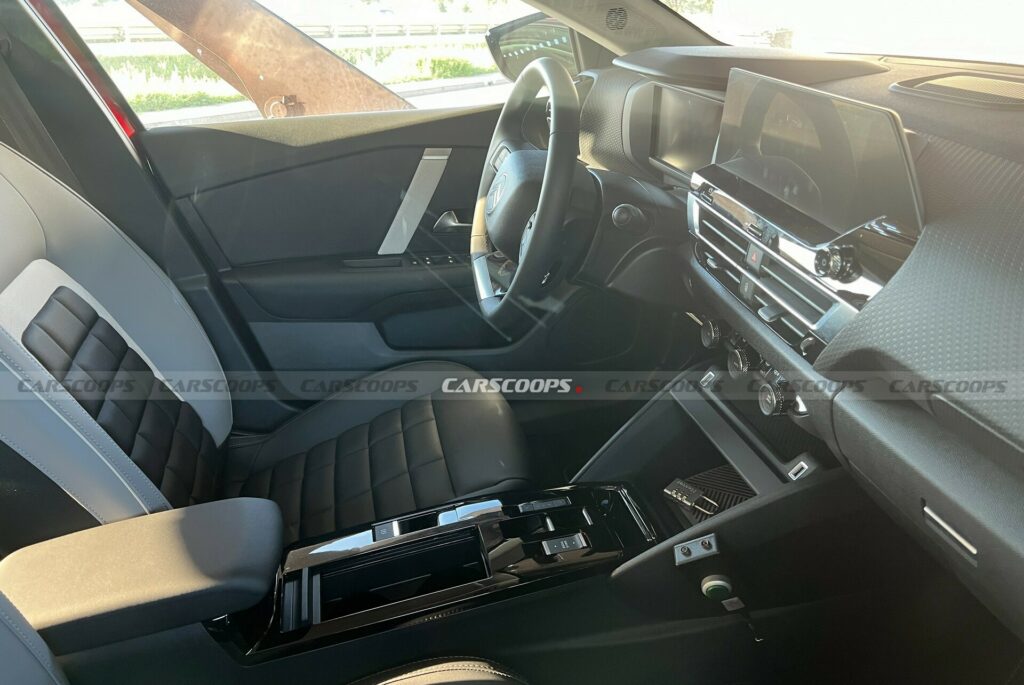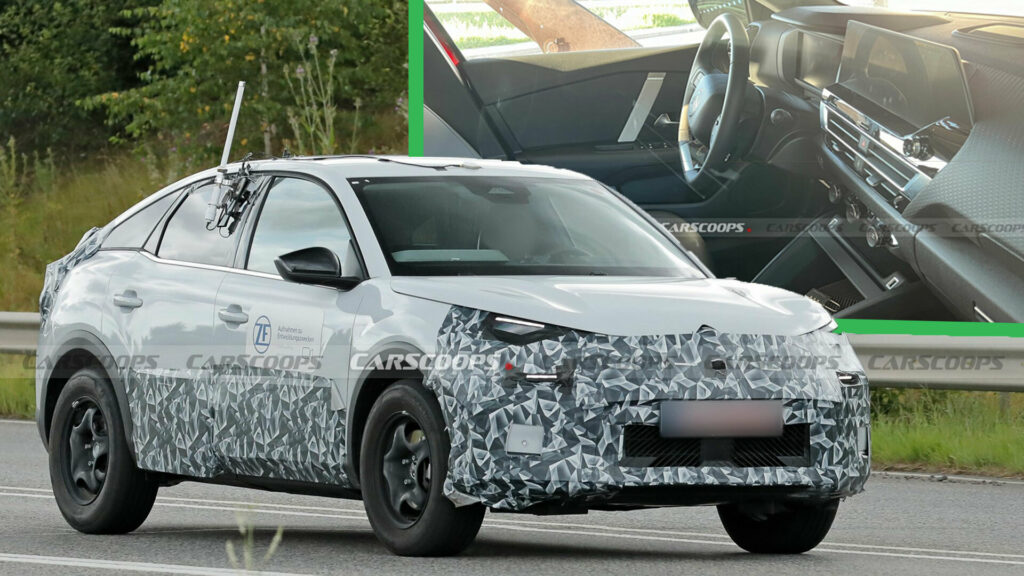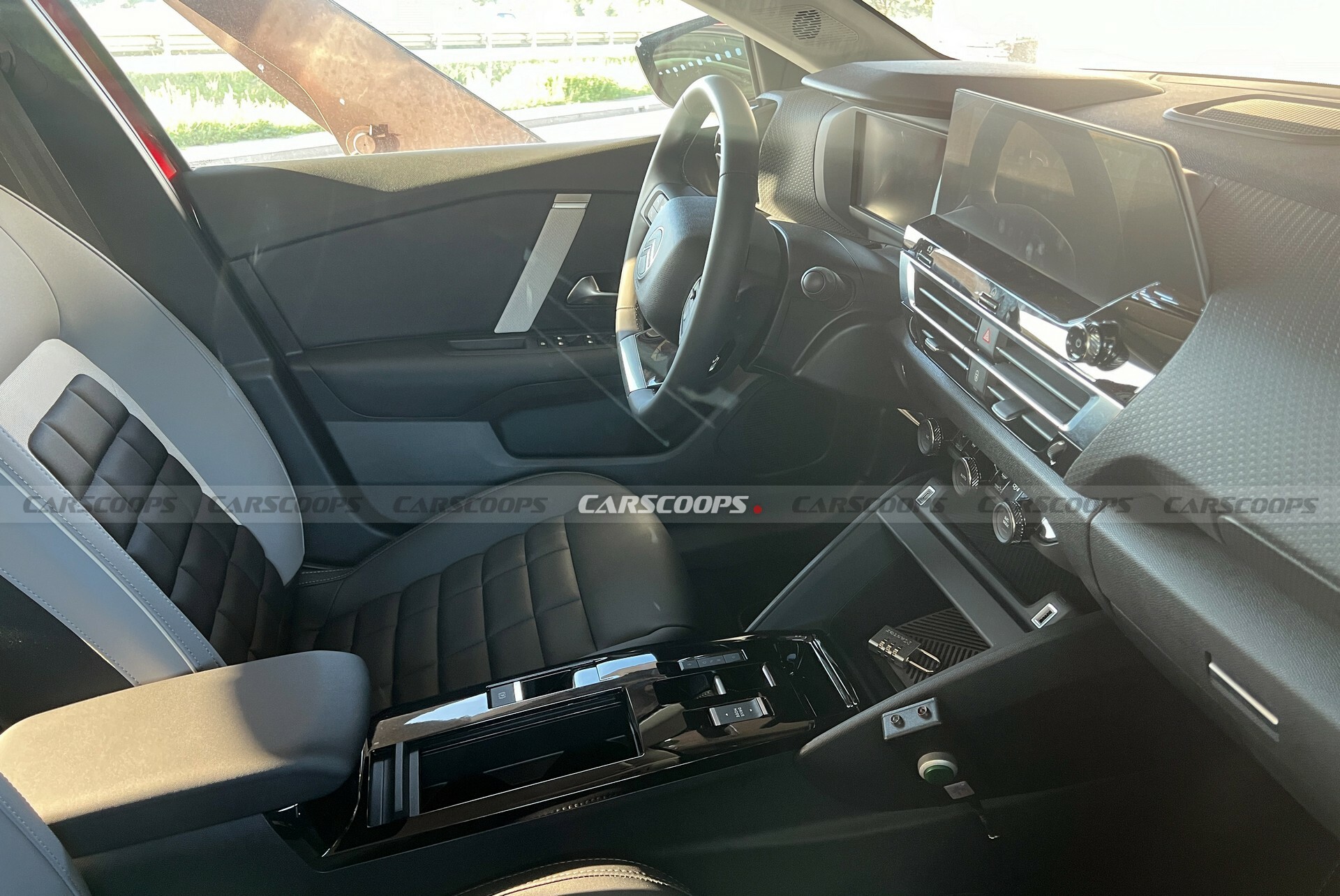- Spy photographers have caught the facelifted Citroen C4.
- The model features a new front fascia, updated lighting units, and a lightly revised interior.
- A debut could occur at the Paris Motor Show in October.
Spy photographers have hit the Citroen C4 jackpot as an assortment of prototypes were caught being transported on a car hauler. If that wasn’t special enough, they’ve also snagged an interior photo and spied a model being driven on public roads.
Starting inside, there isn’t much to report as the cabin appears to largely carryover. However, we can see a lightly revised steering wheel that sports Citroen’s updated logo. They’re joined by tri-color seats as well as familiar gloss black trim.
More: Facelifted Citroen C4 Tries To Adapt A Square C3 Peg Design To Its Round Hole
Bigger changes occur outside as the C4 adopts new high-mounted headlights as well as slender lower daytime running lights. We can also expect to find a revised front fascia with Citroen’s new logo.
Additional changes are limited, but a few of the prototypes on the car hauler had exposed cladding. This revealed the accent beneath the front doors is being jettisoned, leading to a more streamlined and less fussy appearance.

While the rear end is heavily disguised, we can clearly see new taillights with horizontal elements. We can also expect updated Citroen badging.
Since this looks like a relatively minor facelift, powertrains may carryover. This remains to be seen, but Citroen has been proactive in keeping the engine lineup fresh.
Just a few months ago, they introduced the C4 Hybrid 136, which features a 1.2-liter three-cylinder petrol engine, a 48V lithium-ion battery, and a dual-clutch transmission with an integrated 28 hp (21 kW / 29 PS) electric motor. When the model debuted in February, Citroen said it could complete up to 50% of urban journeys electrically.
Speaking of electric power, the ë-C4 lineup was improved in 2023 with a new model featuring a 154 hp (115 kW / 156 PS) electric motor and a 54 kWh battery pack. This enabled the variant to travel up to 261 miles (420 km) in the WLTP cycle.





































